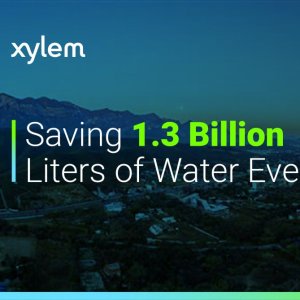A Solid Solution for Water Insecurity

STORY INLINE POST
Q: Which characteristics make the Solid Rain product environmentally friendly and value added?
A: Solid Rain is a product derived from petroleum and the polymers are composed of carbon atoms, which are held together by electric charges. When this product comes in contact with water, the bonds begin to detach and undergo a molecular adhesion process. This converts liquid water into solidified water fragments. Many believe that because it is derived from petroleum it will contaminate the environment but because it is not soluble in water, it does not contaminate its surroundings. The product contains carbon, nitrogen, potassium and hydrogen, which are nonpolluting elements and could actually be used as nutrients if the product was soluble. It is important that the product is not soluble because its main purpose is to retain humidity. Each particle has the ability to retain up to 500 times its own weight in water, so 1kg can hold up to 250l of water. As humidity decreases Solid Rain returns to its original dust-like state and continues to absorb water for up to 10 years.
Q: How much water could Solid Rain help conserve in the long term?
A: We have conducted many different experiments over the past 11 years with a variety of plants. One example involved placing plants in pots along with soda bottle caps filled with our product. We use those caps as our measuring unit because in rural areas they do not have measuring weights and we use what is most appropriate for the end user. For every liter of water, one bottle cap of product is used. In our experiments, we would place a plant in 5l of soil and 5l of water along with 5 bottle caps of Solid Rain to create a uniform distribution. The soil absorbs the Solid Rain and it is no longer necessary to water the plant until the plant’s leaves demand it.
Another study conducted on the trees of Mexico City showed they did not need to be watered for five months unless there was a drop in humidity of more than 50 percent. The soil around the trees remained dry throughout those months because the product retains the greatest amount of water possible. Solid Rain does not extract humidity from the roots nor from surrounding plants, functioning solely by absorbing liquid water. The purpose of watering systems is to keep the roots of the plants humid. Using Solid Rain as a watering system maximizes the use of water because the water does not evaporate or filter through. As a result of eliminating various wasteful factors, the plant can absorb almost all the available water, allowing farmers to save up to 90 percent of their water. Most plants using Solid Rain are watered after an average of every 165 days, reducing water usage by almost 99 percent.
Q: What applications does Solid Rain have for other industries?
A: Solid Rain has been used to help restore vegetation in certain ecosystems, strengthening the food chain. Some companies also have adapted our product into their business models. One company combines ice with Solid Rain to ensure the ice keeps its solid form during food delivery. This keeps the merchandise from getting wet and maintains the cold temperature it needs to stay fresh. The product also has been used to stop bushfires from expanding. Firefighters create a perimeter of Solid Rain around the fire. When it reaches the boundary, the fire dies out on its own.
Q: What impact can Solid Rain have on the usage and management of water resources in Mexico?
A: Solid Rain can help reduce poverty, migration and hunger worldwide and we are achieving these goals in many regions. When ejidos cut down trees, stopping the filtration of water, they are left with undrinkable water, causing various health problems. These communities are automatically resistant to change but we have begun to help them develop more appropriate rainwater management and collection systems. The majority of the population does not collect rain water and in large cities, the water is wasted as it runs off into drains and mixes with sewage. These communities now store rain water with Solid Rain in cloth sacks for the dry seasons of the year. They are able to grow their crops using last year’s rain without having to depend on the amount of rain that will fall that year.






















